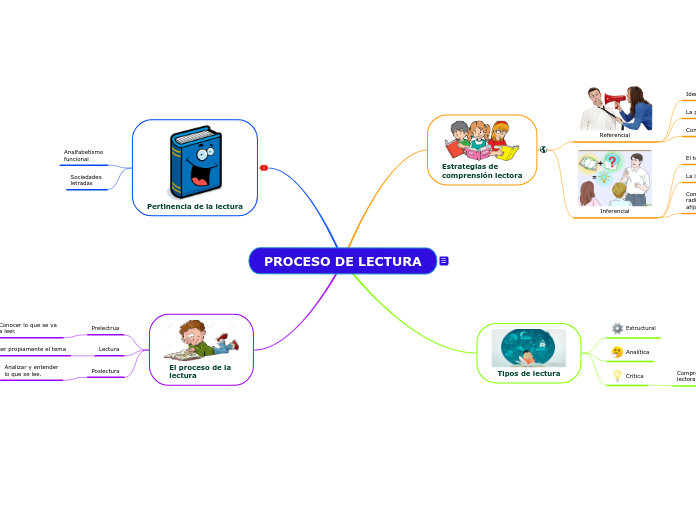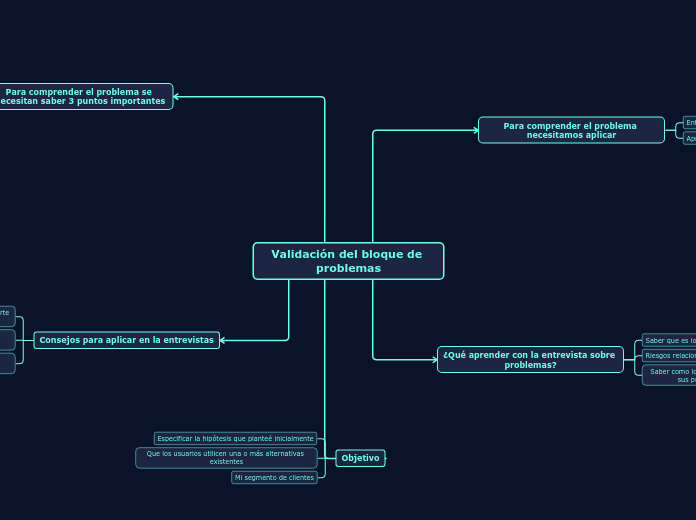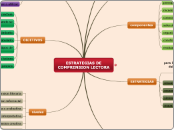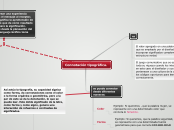NIVELES DE COMPRENSION LECTORA
To name your story, you have to think about the overall message and what you want your audience to understand from the story. Also, make it relevant and easy to remember.
3.NIVEL DE COMPRENSION CRITICO
The ending of a story is essential. We all know that if the ending is weak, what happened before loses its importance. So make it unpredictable, but fair. A resolved ending answers all the questions and ties up any loose threads from the plot.
Juicios
Rechazo o aceptación
depende del código moral
Apropiación
requiere evaluación relativa
Adecuación y validez
compara la información
Realidad o fantasía
la experiencia del lector de las cosas que lo rodean
2.NIVEL DE COMPRENSION INTERFENCIAL
The middle of the story is where you add layers of complications that will lead to the end. Reveal more about the character's journey. Did their personality go through changes? How did they overcome the challenges? And as you build up the story’s central conflict, make it more personal to that character. Also, from the middle act, you have to lead into the final act.
operaciones
Your character(s) need(s) motivation in order to solve the challenge(s).
interpretar
Secondary characters also might have motivs beacuse of which they may cross path with main character or which might trigger them to help the main character.
lenguaje fijurativo
predecir
Secondary characters might also have motives that lead them to cross paths with the main character or which might trigger them to help the main character.
acontecimientos sobre la base de una lectura
Inferir
Why does your character need to confront this challenge? What does he/she expect to accomplish by solving it?
See a few examples:
- will marry in 3 days
- can fix the mistakes of the past
relaciones de causa y efecto
realizando hipótesis sobre las motivaciones
secuencias
sobre acciones que pudieron haber ocurrido
ideas principales
detalles adicionales
el lector
Each story has a main character and that character usually needs to solve a problem or challenge. The character's challenge is the one that creates tension throughout the story.
explicamos el texto mas ampliamente
In most stories, there are 3 challenges. The number 3 is a mystical number symbolizing completeness. Try to come up with interesting challenges with which your character needs to struggle.
See a few examples below:
- turns into a werewolf at night
- is sent back in time
formulación de hipótesis y nuevas ideas
se agrega información
1.NIVEL DE COMPRENSION LITERAL
In the beginning of the story (or the exposition), you will need to introduce the setting and characters. You might also want to introduce the main conflict. This part of the story is important because it gives the reader necessary background information and maybe even a first insight into a character’s personality.
caracteristicas
Characters are essential to a good story. Usually, the protagonist(s) is/are the most affected by the plot. Introduce a character by focusing on their actions, interests, and occupation, as the physical appearance doesn't make a difference in most cases.
Se centra en las ideas
Type in the name of your character.
De causa o efecto
identifica razones
Por comparacion
identificar caracteres
De secuencias
What is your character's main goal?
fight Evilfind lovedefeat his/her enemyrule the worldmake friendstime travelmake an awesome discoveryOther
orden de las acciones
De ideas principales
Which traits best describe the character's personality? Choose more if necessary:
introvertedloyalkindindependentquick-thinkingadventuresomeidealisticsweet-naturedcalmrisk-takercreativewittystrictfussyweirdclumsyharshaggressivecarelessclingingcowardlycrueldeceitfulimpulsiveOther
la idea mas importante
De detalle
Choose the type of your chacter:
Protagonist (main character)Antagonist (main character's opponent)Flat (stereotypical character)Round (his/ her personality develops throughout the story)Static (doesn't evolve as a person throughout the story)Dynamic (dramatical change in personality)Confidant (the main character trusts him/ her)Foil (contrasting character who enhances the personality of another character)Other
identificar nombres










